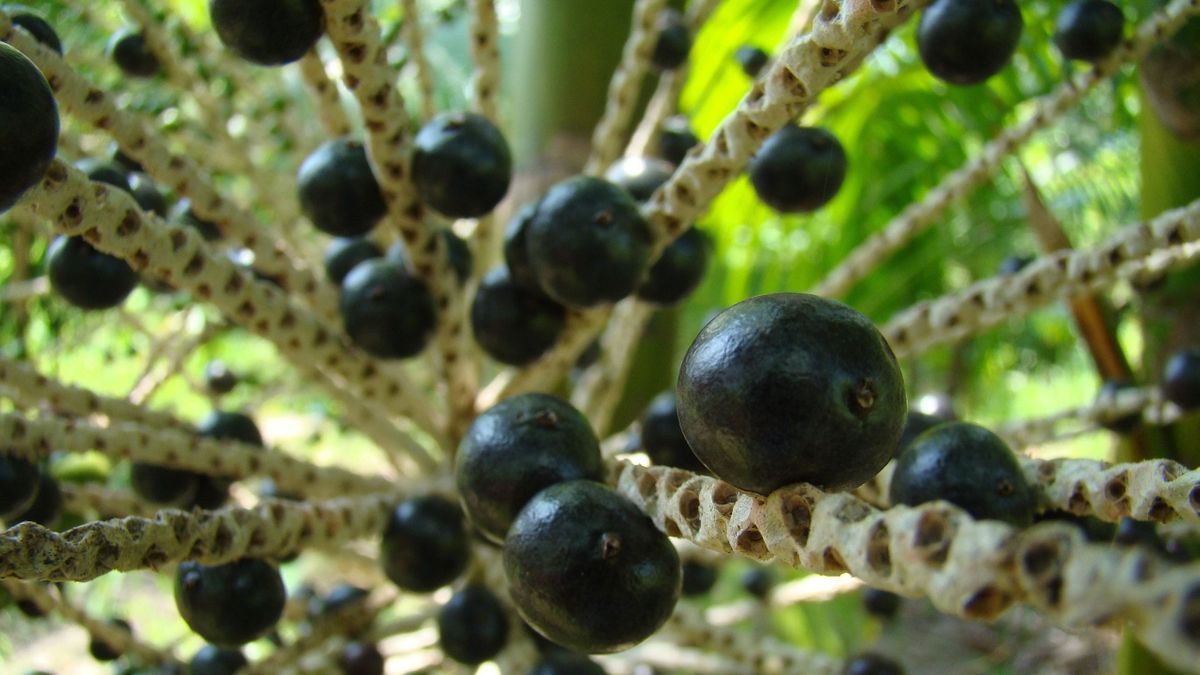
Consumed as it is, in juice or sorbet, acai is an Amazonian berry that has become the darling of “superfood” enthusiasts all over the world, for its high energy properties.
Where does acai grow?
Acai grows on the pinot palm, a tree native to the Amazon known in Brazil as “açaizeiro”. It can measure more than 20 meters high.
Its fruits, small black berries with fine pulp, are picked by hand, in large clusters that hang on branches near the treetops. This is why it is often necessary to climb high to cut these bunches when the berries are ripe.
The vast majority of production comes from flooded areas of the Amazon, where acai originally grows, but there are plantations on dry land as well.
Previously, the pinot palm only bore fruit during the traditional picking period (August to January), but new agricultural techniques have made it possible to maintain a certain production volume throughout the year.
Boom de production
Brazil is the world’s leading producer of acai, and the Amazonian state of Para (north) concentrates 90% of this production.
In 2021, Para produced nearly 1.4 million tons of acai, which injected 5 billion reais (around 950 million euros) into the local economy, according to the institute of IBGE statistics.
Exports of acai products have increased exponentially in recent years, from 60 kg in 1999 to 15,000 tonnes in 2021, according to Para government data.
The main importers are the United States, Japan, Australia and European countries.
Overproduction endangering biodiversity?
Acai production has long been presented as a model of “bio-economy”, a source of income for local populations in the Amazon without cutting back on the forest.
But studies have shown that this expansion is harmful to biodiversity, when the pinot palm takes the place of other native species.
“In the natural state, there are 50 to 60, even 100 per hectare. If we exceed 200, we lose 60% of the biodiversity in these flood zones.“, explains to AFP the biologist Madson Freitas, researcher at the Emilio Goeldi museum in Belem.
Monoculture is also detrimental to the acai harvest: the disappearance of certain plants affects pollination by insects such as bees, ants or wasps, which causes production to drop.
NO to diets, YES to WW!
From berry to shampoo
Acai is part of the staple diet of the people of Para, who eat the berries in bowls, sometimes mixing them with cassava flour.
But in the rest of the country, it is mostly eaten as a sorbet, with added sugar, and often mixed with granola.
Acai is also used in some cosmetic products, including moisturizing lotions or shampoos.
The seeds are also found in local crafts.
